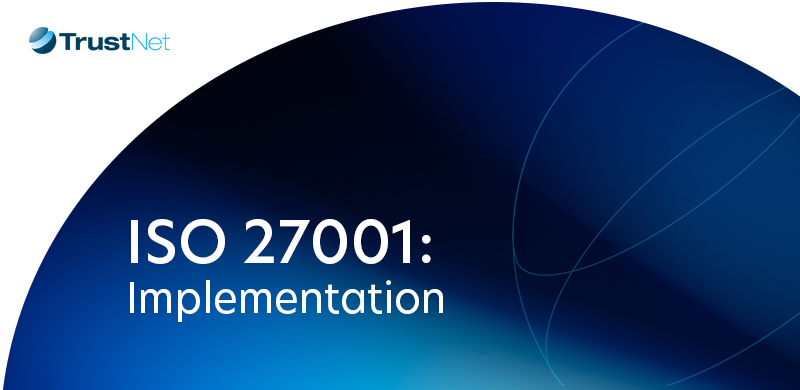Using Vulnerability Management to Avoid Disruption

In 2023, Samsung disclosed a data breach in which source code, security-related information, and other internal company data was exfiltrated. The fallout extended beyond reputational damage—it disrupted operations, raised regulatory concerns, and exposed weaknesses that competitors and threat actors could continue to exploit. Incidents like these highlight a sobering reality: reacting to cyber threats after they have taken root is no longer a viable strategy.
Modern enterprises operate in dynamic, interconnected environments. Software changes rapidly, dependencies multiply, and attackers move faster. As cybersecurity threats escalate in scale and sophistication, your organization simply cannot afford to treat defense as an afterthought; every missed vulnerability is a potential breach in waiting.
Proactive vulnerability management flips the script. It equips leaders with the visibility, context and agility they need to reduce risk, minimize operational disruption, and defend business value. When executed effectively, vulnerability management does more than close technical gaps: it drives resilience, protects customer trust, and frees up skilled security talent to focus on high-impact strategic work. Accurate identification, intelligent automation, and software supply chain awareness combine to help CISOs stay ahead from evolving threats—and ahead of the competition.
Vulnerability management and proactive security
Successful vulnerability management gives security teams the tools and processes they need to stay ahead of attackers. It operates as a continuous cycle—identify, assess, prioritize, and remediate vulnerabilities across systems, applications, and infrastructure. When CISOs treat this process as strategic rather than reactive, they reduce exposure and strengthen their organization’s ability to withstand operational shocks.
The process begins with visibility: you cannot secure what you cannot see. Comprehensive asset discovery forms the foundation of any effective program. From there, organizations can use automated scanning and threat intelligence feeds to detect known vulnerabilities, outdated software versions, and misconfigurations across environments.
Not every vulnerability carries equal risk. Effective vulnerability identification and management goes beyond counting CVEs and applies business context to prioritize what matters most. Security teams assess exploitability, criticality, and asset value to determine which weaknesses pose real threats to operations, data, and revenue.
Once prioritized, remediation efforts must move quickly. Delays open the door to exploitation, especially as proof-of-concept exploits circulate within hours of vulnerability disclosure. Whether the fix involves patching, reconfiguring, or segmenting affected systems, organizations must act decisively and consistently to minimize the blast radius of a potential breach.
Proactive vulnerability and patch management safeguards uptime, revenue continuity, and stakeholder trust while protecting your systems. Without it, your security team might be spending their days chasing incidents, plugging leaks, and reacting under pressure—with it, they shift left, build securely, and operate from a position of strength.
Importance of accuracy, context, and automation
Vulnerability identification is at the heart of a strong security posture. If your team misses a critical weakness or misclassifies its risk, attackers will exploit the gap before you can respond. The challenge is not just scale; it is precision. Security scanners today can identify thousands of vulnerabilities in a single environment, but not all vulnerabilities matter equally. Flooding security teams with unfiltered findings leads to alert fatigue, wasted effort, and increased exposure to the vulnerabilities that actually threaten your business.
Accurate vulnerability identification demands intelligence about the exploitability of the issue, the value of the affected asset, and the potential impact of compromise. Without this context, teams waste time patching low-risk issues while missing the ones that can take down production. This is where automation earns its place—handling the repetitive, menial tasks such as scanning, correlating CVEs, collecting patch data, and enriching vulnerabilities with threat intelligence. When security teams can automate these workflows, they spend less time sorting through noise and more time investigating root causes, developing secure-by-design practices, and coordinating cross-functional remediation.
Security leaders cannot scale their programs through headcount alone; they need intelligent systems that can surface what matters and suppress what does not. Automation is no replacement for the human in the loop—it elevates your team’s ability to prioritize action based on business risk, not just technical severity. For CISOs, this means fewer firefights and distractions, so you can focus on protecting the business instead of responding to threats.
The hidden risk of software supply chain vulnerabilities
It’s important to remember that modern software does not live in isolation. It relies on third-party libraries, open-source components, APIs, and vendor-supplied code. This interconnected ecosystem accelerates development and innovation, but it also creates a sprawling, opaque attack surface. When one piece breaks, the ripple effects can compromise entire systems.
Attackers understand this, so they no longer focus only on breaching perimeters. Instead, they target the software supply chain, injecting malicious code or exploiting known vulnerabilities in shared components. As a result, these weaknesses can sometimes bypass traditional security controls by arriving embedded within trusted software. Visibility down to the component level is a critical element of managing this risk.
This is where software bills of materials (SBOMs) play a critical role. An SBOM functions like an ingredients list for your applications, documenting every library, dependency, and version included in a software package. Without an accurate SBOM, teams cannot quickly identify whether they are exposed to a newly disclosed vulnerability.
Integrating SBOM data into your vulnerability management workflow is the best way to stay apprised of your exposure risk:
-
- Scan all deployed components, not just proprietary code. Vulnerabilities can hide in third-party packages, containers, and services.
- Monitor supply chain components continuously. Real-time monitoring helps detect when a dependency becomes vulnerable or behaves unexpectedly in production environments.
- Enrich vulnerability data with threat intelligence. Pair SBOM insights with exploit data, adversary behavior, and severity context to improve prioritization.
- Coordinate cross-functional response before exploitation occurs. When teams across security, development, and operations align early, they can remediate risks faster and prevent business disruption.
Proactive supply chain security also requires runtime protection. Static scans can flag issues during development, but attackers often strike after deployment. Layer runtime vulnerability detection with anomaly monitoring to gain visibility into how third-party components behave in production and shut down malicious activity before it spreads.
Ignoring the software supply chain invites risk that travels faster than your response. Embrace supply chain-aware vulnerability management for a fighting chance at staying ahead of complexity and adversaries as your business grows.
From firefighting to fortification
Vulnerability management does much more than close security gaps: it protects uptime, preserves revenue, and strengthens customer trust. For CISOs navigating today’s volatile threat landscape, it offers a direct path from firefighting to proactive fortification. Accurate identification, contextual prioritization, and intelligent automation can equip your security team to move faster than attackers. Focus efforts on what matters most to reduce your risk exposure without overloading your talent.
Modern threat actors exploit more than technical flaws—they exploit slow response times, siloed teams, and visibility gaps. Vulnerability management counters these advantages by creating clarity, accelerating decision-making, and reinforcing organizational alignment across security, IT, and development. By integrating SBOMs, monitoring third-party code, and layering in runtime protection, you can build a proactive strategy with the visibility and control your organization needs.
The business case is clear. Vulnerability management is hardly a technical checkbox; it is a strategic cornerstone for operational success. Organizations that invest in vulnerability management avoid breaches, reduce disruption, and grow with confidence in an increasingly hostile digital environment.
Subscribe to the TrustNet Newsletter
actionable cybersecurity strategies, and TrustNet’s cutting-edge solutions.




